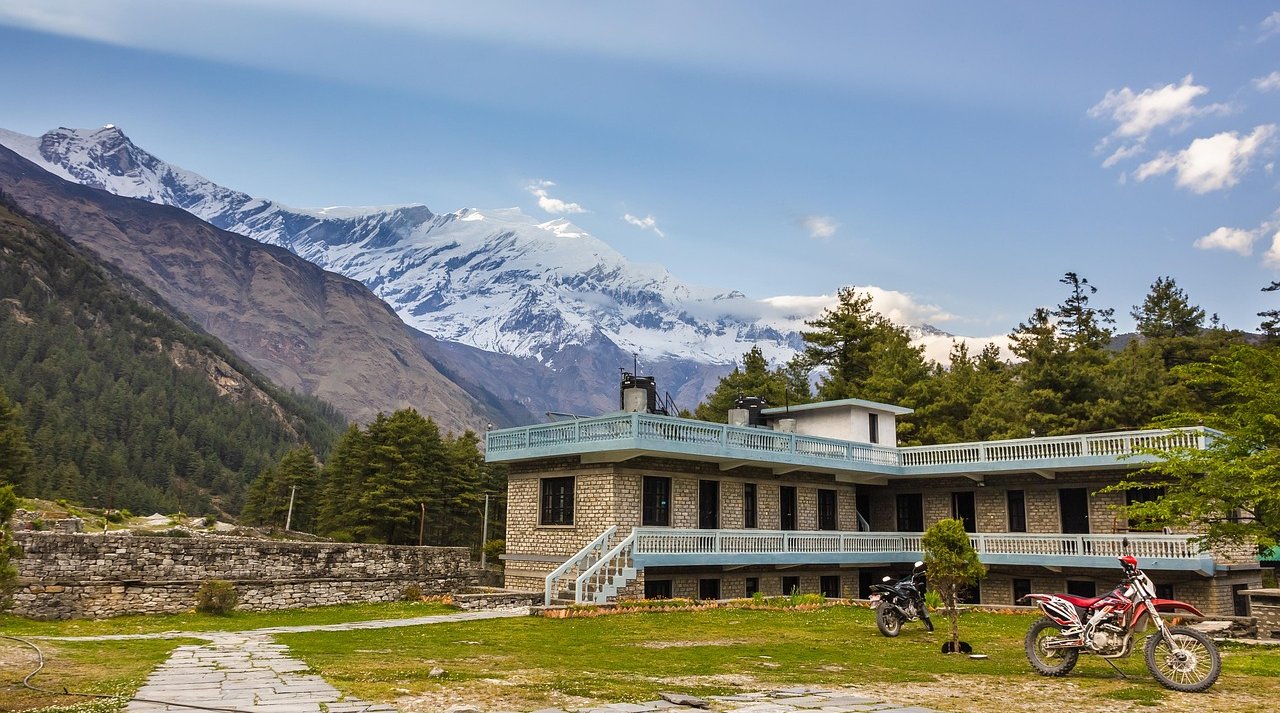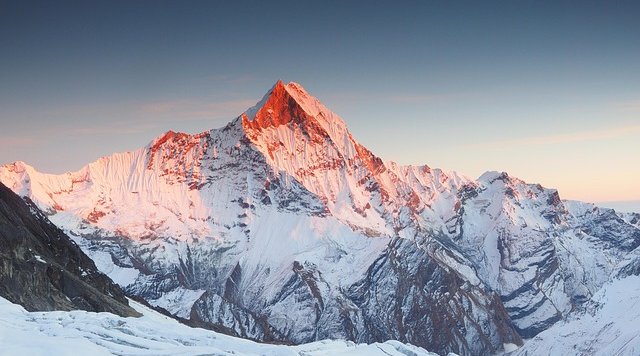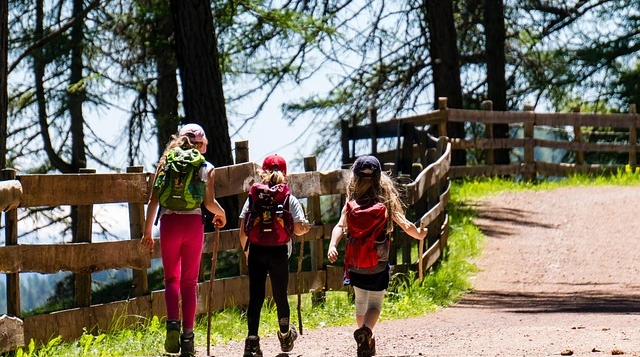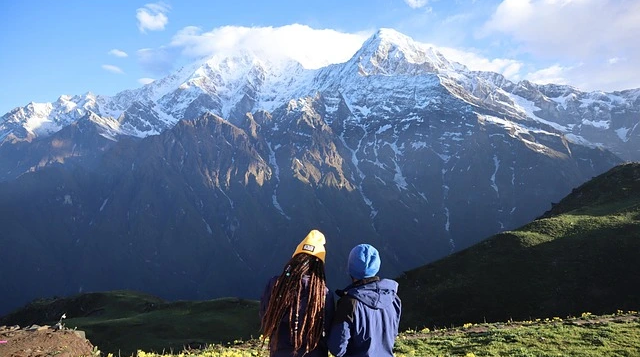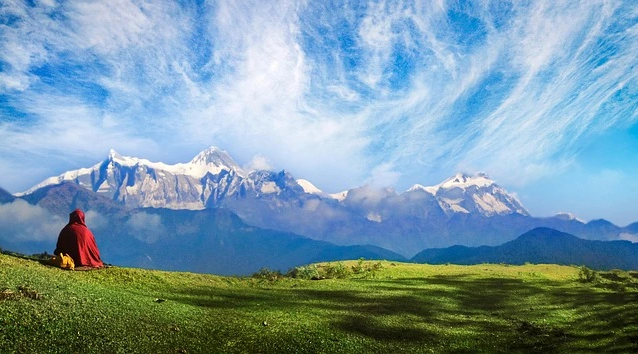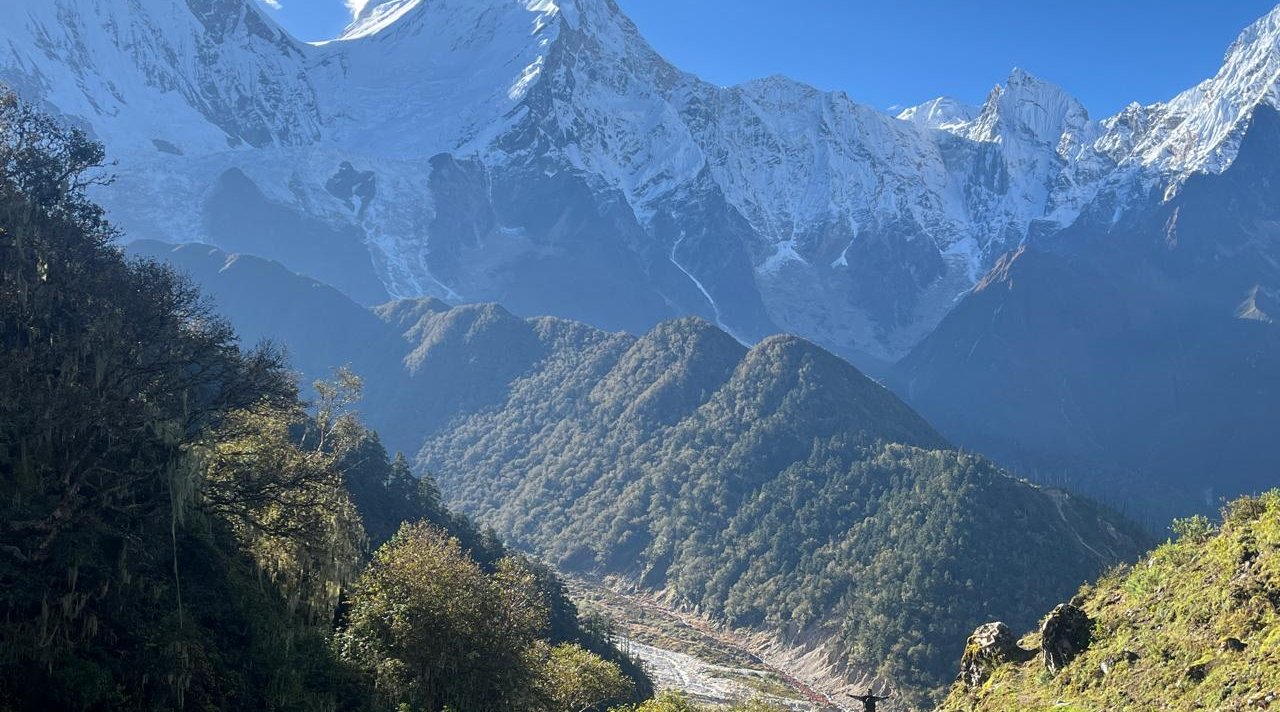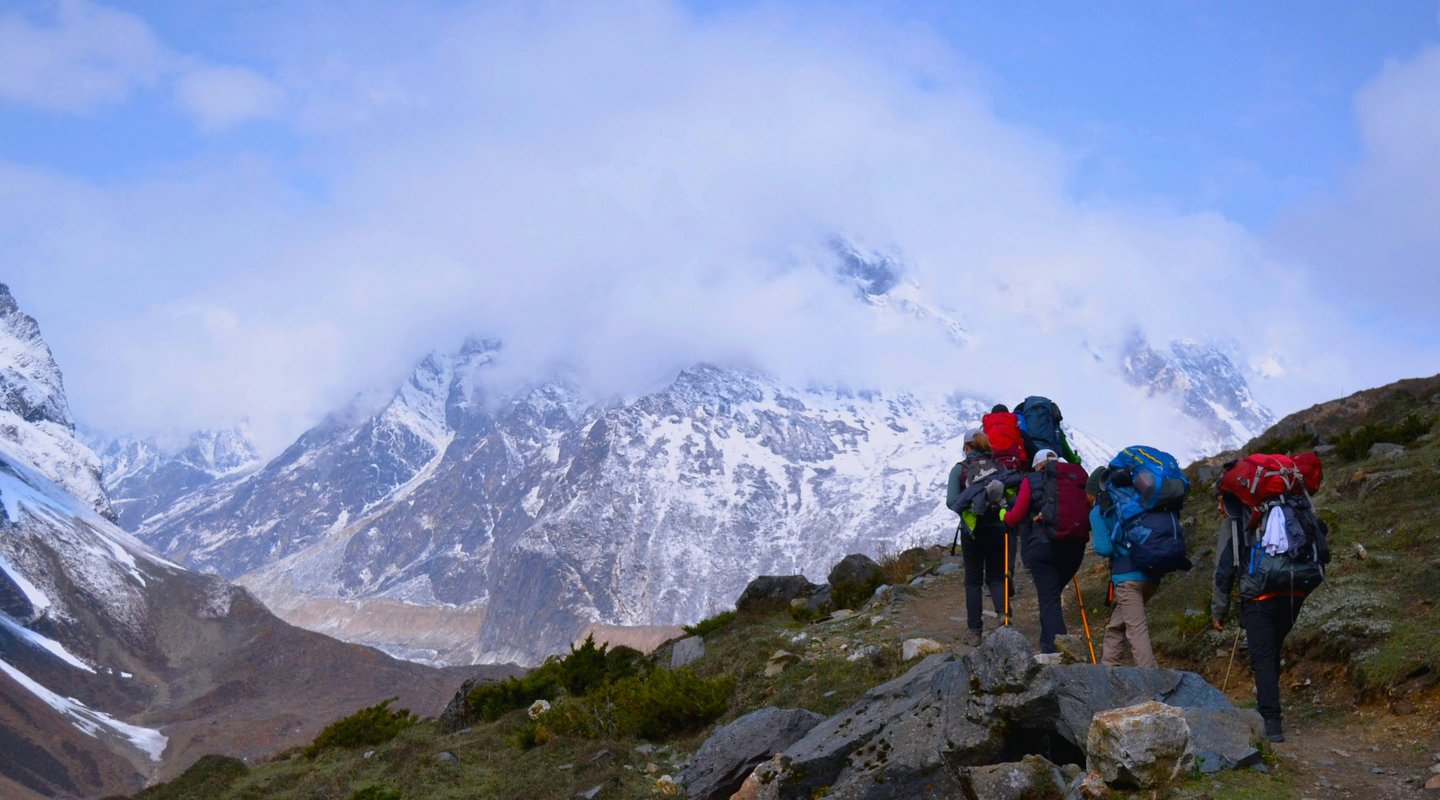The North Annapurna Base Camp itinerary offers one of Nepal's most challenging and rewarding high-altitude adventures, following the legendary Maurice Herzog route that made history in 1950. This remote Himalayan expedition takes trekkers through pristine wilderness to the base camp of Annapurna I's north face, where French mountaineer Maurice Herzog and his team achieved the first successful ascent of an 8,000-meter peak. Unlike the popular South Base Camp trek, the North Annapurna Base Camp itinerary provides an authentic wilderness experience through unexplored valleys, ancient forests, and sacred lakes that few trekkers ever witness.
This comprehensive Nepal trekking itinerary combines technical trekking challenges with profound cultural immersion, making it perfect for experienced hikers seeking solitude away from crowded trails. The journey encompasses everything from Annapurna North Base Camp trekking logistics to cultural encounters with remote mountain communities, all while traversing through the protected Annapurna Conservation Area.
Best Seasons and Visibility for Your North Annapurna Base Camp Journey
Timing your North Annapurna Base Camp itinerary correctly is crucial for both safety and spectacular mountain views. The optimal trekking windows offer distinct advantages:
Spring Season (March-May)
- Rhododendron hiking season reaches its peak during April-May
- Crystal-clear mountain visibility with minimal cloud cover
- Comfortable daytime temperatures ranging from 15-20°C at lower elevations
- Perfect conditions for photography and mountain panoramas
- Moderate crowds on approach trails before entering remote Himalaya trails
Autumn Season (September-November)
- Post-monsoon clarity provides exceptional visibility
- Stable weather patterns ideal for camping trek in Nepal adventures
- Crisp, dry air enhances mountain photography opportunities
- Comfortable trekking temperatures with cool, clear nights
- Harvest season offers cultural insights in traditional villages
Winter and Monsoon Considerations
Winter months (December-February) present extreme cold and potential trail closures, while monsoon season (June-August) brings heavy rainfall, leeches, and obscured mountain views. These seasons are not recommended for the North Annapurna Base Camp itinerary.
Detailed Day-by-Day North Annapurna Base Camp Itinerary
This comprehensive 12-day Nepal trekking itinerary follows the classic Maurice Herzog route with carefully planned acclimatization and rest days:
Day 1: Kathmandu to Besi Sahar (760m)
- Early morning departure from Kathmandu via private vehicle
- 6-7 hour scenic drive through terraced hills and river valleys
- Final gear checks and permit verification
- Overnight in a local guesthouse, final preparations
Day 2: Besi Sahar to Jagat (1,340m)
- Begin the official Annapurna North Base Camp trekking journey
- 6-7 hours trekking through traditional Gurung villages
- Cross suspension bridges over the roaring Marsyangdi River
- Enter the Annapurna Conservation Area checkpoint
- Traditional dal bhat dinner with local families
Day 3: Jagat to Dharapani (1,960m)
- 5-6 hours ascending through rhododendron and bamboo forests
- Cultural transition from Hindu lowlands to Buddhist highlands
- First glimpses of snow-capped peaks through the forest canopy
- Altitude acclimatization begins in earnest
Day 4: Dharapani to Chame (2,710m)
- 4-5 hours trekking with gradual altitude gain
- Enter Manang district with distinct Tibetan cultural influences
- Natural hot springs are available for muscle recovery
- Annapurna Conservation Area Permit (ACAP) checkpoint verification
Day 5: Chame to Pisang (3,200m)
- 5-6 hours through dramatic landscape changes
- First spectacular views of Annapurna massif
- Apple orchards and traditional architecture
- Important acclimatization day preparations
Day 6: Pisang to Manang (3,519m) - Acclimatization Day
- 4-5 hours moderate trekking to Manang valley
- Full rest day for altitude acclimatization
- Optional hikes to nearby viewpoints and monasteries
- Cultural exploration of traditional Tibetan village life
Day 7: Manang Rest Day
- Complete acclimatization day following remote Himalaya trails safety protocols
- Optional day hikes to Gangapurna Lake or Ice Lake
- Altitude adjustment essential before higher camps
- Gear organization and camping trek in Nepal preparations
Day 8: Manang to Khangsar (3,734m)
- Begin serious North Annapurna Base Camp itinerary ascent
- 4-5 hours through increasingly remote terrain
- Last permanent settlement before base camp approach
- Final supply preparations and guide consultations
Day 9: Khangsar to Tilicho Base Camp (4,150m)
- 3-4 hours ascending to advanced base camp
- Dramatic landscape with glacial moraines and rocky terrain
- Camping trek in Nepal experience begins
- Essential gear checks and safety briefings
Day 10: Tilicho Base Camp to North Annapurna Base Camp (4,200m) via Pancha Kunda Lake
- Epic 8-10 hour trekking day following Maurice Herzog route
- Visit sacred Pancha Kunda Lake complex
- Reach actual North Annapurna Base Camp site
- Camping beneath Annapurna's towering north face
Day 11: North Base Camp Exploration and Return to Khangsar
- Dawn photography at base camp with spectacular sunrise views
- Explore historic campsites and mountaineering history
- 6-7 hours descent back to Khangsar
- Celebration dinner with trekking team
Day 12: Khangsar to Manang and Drive to Kathmandu
- Final descent through familiar remote Himalaya trails
- Private vehicle return to Kathmandu
- Trip completion celebration and gear return
Cultural and Natural Highlights Along the Route
The North Annapurna Base Camp itinerary showcases Nepal's incredible biodiversity and cultural heritage:
Flora and Fauna Discoveries
- Rhododendron hiking season reveals over 25 species of Nepal's national flower
- Blue sheep, snow leopards, and Himalayan tahr inhabit higher elevations
- Over 440 bird species have been documented within the conservation area
- Ancient juniper forests and high-altitude medicinal plants
- Glacial formations and geological wonders throughout the trek
Sacred Sites and Cultural Immersion
- Pancha Kunda Lake holds deep spiritual significance for Hindu and Buddhist pilgrims
- Traditional Tibetan Buddhist monasteries with ancient artifacts
- Authentic cultural exchanges with Gurung, Manangba, and Tibetan communities
- Traditional architecture, including centuries-old chortens and mani walls
- Local festivals and cultural ceremonies depend on the timing
Historical Significance
Following the Maurice Herzog route connects modern trekkers with mountaineering history. The 1950 French Annapurna expedition marked the first successful 8,000-meter peak ascent, fundamentally changing high-altitude mountaineering forever.
Essential Permits and Logistics for Your Adventure
Proper documentation ensures smooth Annapurna North Base Camp trekking experiences:
Required Permits
- Annapurna Conservation Area Permit (ACAP): NPR 3,000 for foreign nationals
- Trekkers' Information Management System (TIMS) Card: NPR 2,000
- Restricted Area Permit for certain northern sections: $500+ USD
- Camping permits for designated wilderness areas
Essential Gear for Camping Trek Adventures
- Four-season mountaineering tent rated for high winds
- Sleeping bag rated to -20°C minimum temperature
- High-altitude cooking equipment and fuel supplies
- Technical climbing gear for glacier travel sections
- Emergency communication devices (satellite phone/GPS beacon)
Health and Altitude Preparation
- Comprehensive medical check-up 2-3 months before departure
- Altitude sickness medication (Diamox) consultation with a physician
- Emergency evacuation insurance covering helicopter rescue above 4,000m
- Physical fitness training focusing on cardiovascular endurance
- Previous high-altitude trekking experience strongly recommended
Safety Tips and Professional Guidance
The North Annapurna Base Camp itinerary demands serious preparation and professional support:
Altitude Sickness Prevention
- Follow gradual ascent profiles with built-in acclimatization days
- Recognize early symptoms: headaches, nausea, dizziness, fatigue
- Immediate descent protocols if severe symptoms develop
- Hydration maintenance (3-4 liters daily) at high altitudes
- Avoid alcohol and sleeping medications above 3,000m
Emergency Preparedness
- Licensed guide services with wilderness first aid certification
- Emergency communication equipment on remote Himalaya trails
- Helicopter evacuation coordination with insurance providers
- Weather monitoring and route modification protocols
- Comprehensive emergency action plans for all scenarios
Professional Guide Importance
Experienced local guides provide invaluable services, including route finding, cultural interpretation, emergency response, permit facilitation, and cultural bridge-building with local communities.
Conclusion: Begin Your North Annapurna Base Camp Adventure
The North Annapurna Base Camp itinerary represents the ultimate camping trek in Nepal for serious adventurers seeking pristine wilderness and mountaineering history. This challenging 12-day journey through remote Himalaya trails offers unparalleled rewards: spectacular mountain vistas, profound cultural immersion, and the satisfaction of following the legendary Maurice Herzog route to one of the world's most remote base camps.
From the sacred waters of Pancha Kunda Lake to the towering north face of Annapurna I, every day of this Nepal trekking itinerary delivers unforgettable experiences. The combination of technical trekking, cultural exploration, and historical significance makes this adventure perfect for experienced trekkers ready to push their boundaries.
Ready to embark on your North Annapurna Base Camp itinerary? Contact our expert team today to begin planning your ultimate Himalayan adventure. Our experienced guides, comprehensive safety protocols, and deep local knowledge ensure your journey becomes the adventure of a lifetime.
Book your North Annapurna Base Camp expedition today and join the ranks of elite trekkers who have conquered this legendary route!
Email: [email protected]
📱 WhatsApp: +9779801127073.
🌐 Website: himalayanhero.com

